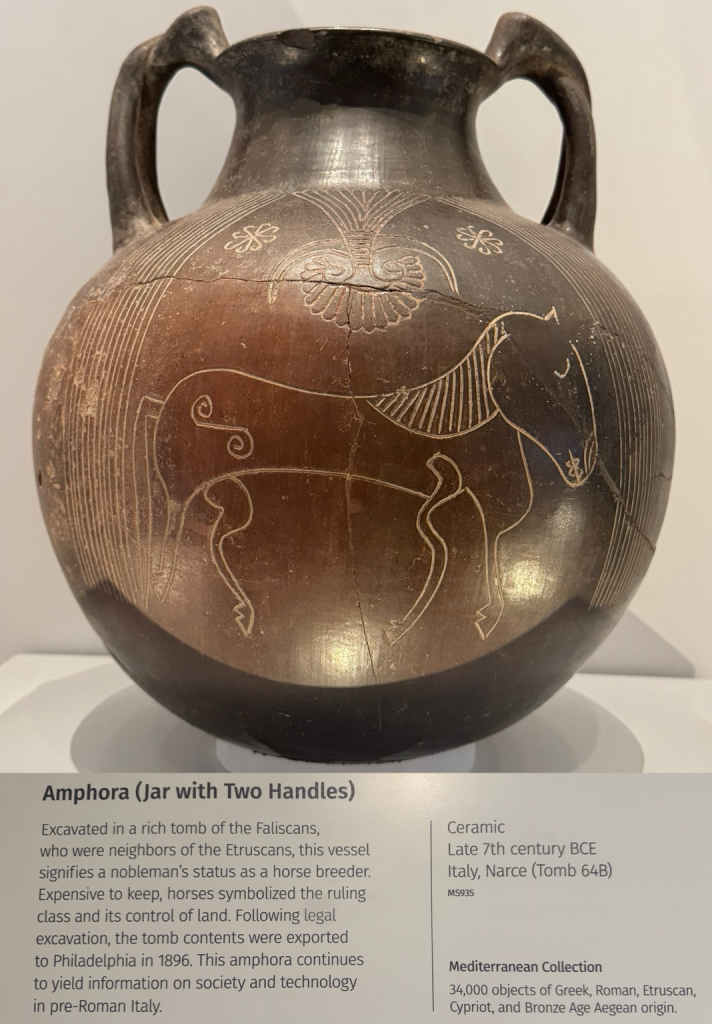Amphora (with #Horse )
Faliscan / Etruscan, Late 7th c. BCE
(Italy | Etruria | Narce, Tomb 64B)
Ceramic, H 34.3 cm, Dia. 26.67 cm
On display at Penn Museum (MS935)
“Excavated in a rich tomb of the Faliscans, who were neighbors of the Etruscans, this vessel signifies a nobleman's status as a horse breeder. Expensive to keep, horses symbolized the ruling class and its control of land.”
Faliscan / Etruscan, Late 7th c. BCE
(Italy | Etruria | Narce, Tomb 64B)
Ceramic, H 34.3 cm, Dia. 26.67 cm
On display at Penn Museum (MS935)
“Excavated in a rich tomb of the Faliscans, who were neighbors of the Etruscans, this vessel signifies a nobleman's status as a horse breeder. Expensive to keep, horses symbolized the ruling class and its control of land.”

